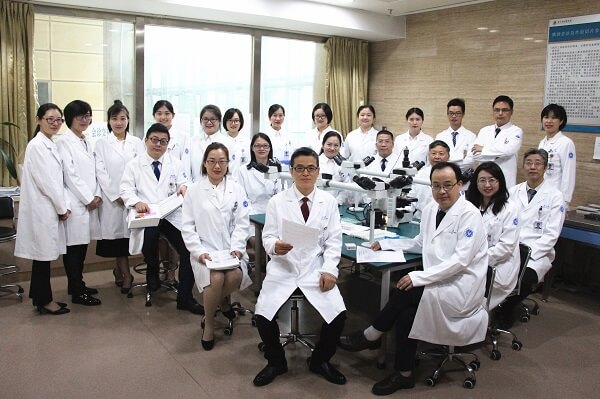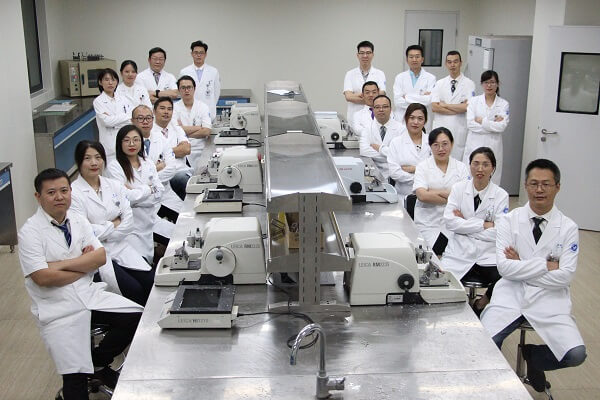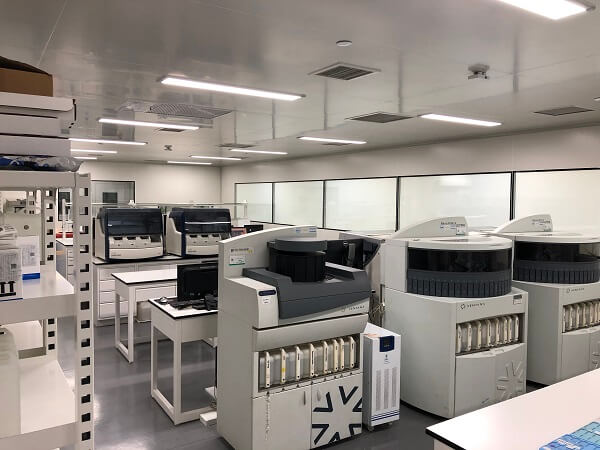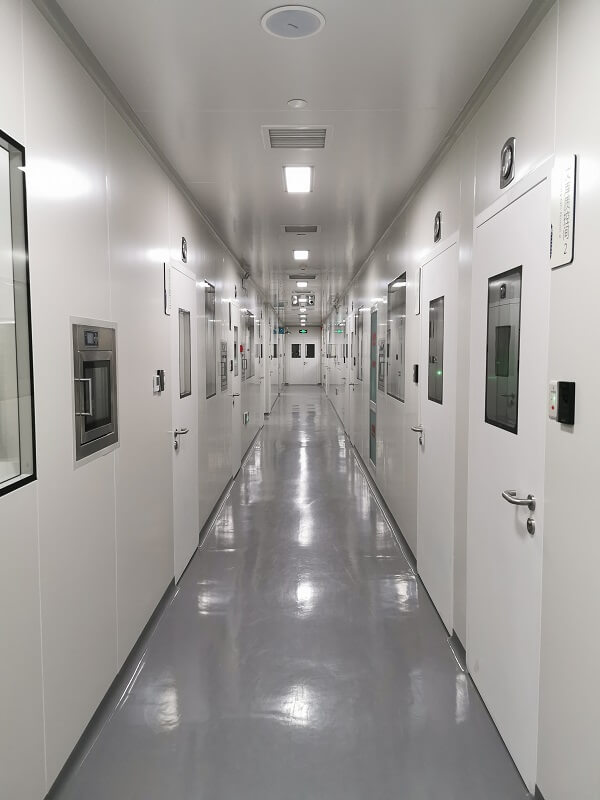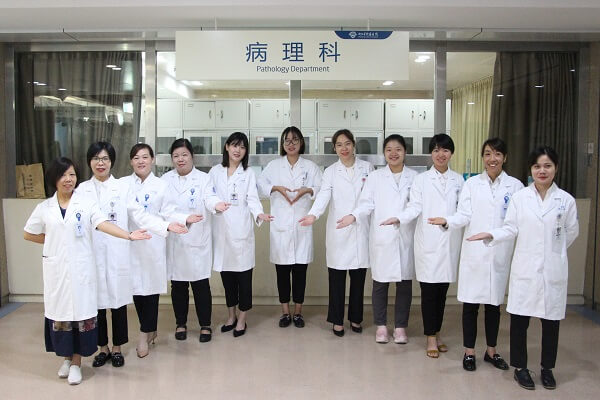
The Department of Pathology of the Cancer Hospital of the University of Chinese Academy of Science(Zhejiang Cancer Hospital)was one of the first independent clinical departments when the hospital was established in 1963. After nearly 60 years of development, it has now become a research-oriented clinical discipline and teaching base, with medicine, teaching and research at its core. It hosts a national standardized training base for resident physicians in clinical pathology, national training base for colposcopy and cervical pathology, the first Pilot Center of Second OpinionTelepathology pointed by Ministry of Health,Zhejiang Provinicial Center of Second Opinion Telepathology , the Key (foster) Subject of Clinical Pathology in Zhejiang Province and the Chairman Unit of Zhejiang Pathology Association. Our department has a solid quality control and quality assurance system for pathological diagnosis. The Zhejiang provincial clinical pathology quality control center, which was established in 1989, is affiliated to our hospital. Over the past 30 years, the expert team of our pathology department has been responsible for the overall quality management and technical guidance of pathology departments at all levels in Zhejiang province,and our working protocol and experiences were shared with colleagues from other provinces and cities in China. In 2019, information management system of the whole process structured pathology diagnosis and quality control was officially launched, and a large database of integrated phenotypic-genotype, including clinicopathology, genomic data and follow-up information was established. It has gradually achieved the barcoding of specimens, the informationization of all processes, the refinement of quality control and the visualization of management, laying a solid foundation for the rapid transformation of pathology department into a clinical pathological precision diagnosis center based on big data and artificial intelligence.
Our department is composed by senior and young specialties with various expertise. Sixty-eight faculties and staffs have been employed by our department, including 32 diagnosticians, 15 senior professional and technical personnel, 3 faculties are awarded " Zhejiang 151 talents project", health high-level innovative talents and "Qianjiang talent" respectively. There are 4 faculties with overseas’ study experience, and 4 world-renowned professors in tissue pathology, genomic medicine, molecular pathology are invited as our joint professors. Thirty-six faculites have held important positions in national oncology academic societies, 5 faculties served as provincial chairperson, and 5 served as editorial members of international and domestic oncology journals.
With a total floor space of more than 3,000 square meters, our pathology department is composed of four sections, namely, surgical pathology, cytopathology, molecular pathology and translational pathology. It has set up sub-specialty diagnostic groups including thoracic cancer, digestive system tumor, breast cancer, head and neck tumor, gynecological tumor, lymphatic hematopoietic and soft tissue tumor. Besides, we are among the first in China to carry out immunocytochemistry and molecular detection of cell wax block, liquid-based preparation, hrHPV DNA detection and computer-assisted reading technology. In the past year, we carried out nearly 40,000 routine pathological diagnoses,more than 17,000 frozen diagnoses during the operation,more than 110,000 immunohistochemical tests and more than 48,000 cases of difficult pathology consultations. Early construction of the molecular pathology laboratory has allowed it to become the national center for pathology quality control (PQCC) model molecular diagnostic laboratory and the first PQCC recognized immunohistochemical quality control laboratory of Her-2 in breast and gastric cancer. At present, the molecular pathology laboratory has been expanded into a molecular diagnostic center of nearly 1000 square meters,with a standard second generation sequencing laboratory, BSL-2+ laboratory and et al. Our molecular diagnostic center was equipped with advanced genomic analysis platform,FISH image analysis system as well as the core technology platforms such as liquid biopsy and fluorescence quantitative PCR. The center plays an important role in the whole process of tumor diagnosis and treatment.
As early as the 1970s, the Department of Pathology carried out research on melanoma and identified the polymorphic subtypes. The results of the study were published in the Chinese Journal of Pathology. The concept of "bud flap-like cell morphology" has been used to date. In the 1980s, we wrote the first monograph on tumor pathology in China, "Concise Oncology Pathology Diagnosis and Identification". Furthermore we were the first in China to edit a series of provincial-level pathological quality control regulations, such as "Specifications for the Diagnosis and Reporting of Common Tumors", "Pathological Diagnosis and Technical Specifications", "Working Protocols and Guidelines for Cytopathology", "General Guidelines for Surgical Pathology and Macroscopic Inspection" , "Practical Pathological Technology Manual" and so on. Based on the Institute of Oncology and Basic Medicine of the Chinese Academy of Sciences and Zhejiang Intelligent and Molecular Diagnostic Center, a multidisciplinary team of translational pathology has been formed. In the past 3 years, our department has undertaken more than 10 national and provincial ministerial projects, and more than 20 multi-center clinical studies. Our research discovered that the characteristics of a high incidence and rare tumors mesothelioma unique to Zhejiang and established Chinese mesothelioma pathological diagnostic criteria. We analyzed the genomic evolutionary features of AAH, AIS, MIS, and provided evidence for early diagnosis and molecular imaging omics of lung cancer. In addition, we have used patient-derived cell models, targeted sequencing, and high-throughput drug screening technologies to establish a molecular marker evaluation and application system for tumor-targeted drug sensitivity in order to accelerate the development and application of targeted drugs and to address the problem of lacking targeted drugs for some tumors with characteristics unique to China. The research results were published in a series of renowned domestic and international oncology journals such as Jama Oncology, JTO, Nat Commun, and Chinese Pathology. We have participated in the compilation of 5 national diagnosis standards, and was awarded 6 national invention patents. Additionally, we have won 4 Science and Technology Progress Awards from the Ministry of Education, China Anti-Cancer Association and the Zhejiang Provincial Government. Our department values communication and cooperation with the international academic community. We regularly seek advices from external experts and send faculties for overseas training. We have established close cooperation with the MD Anderson Cancer Center in the United States, the National Cancer Center in Singapore, the University of Wisconsin-Madison, the Baylor College of Medicine and the University of Humboldt Charité Medical Center. We've been highly recognized by domestic and abroad institutes.
For more information about our department,emai:
sunwy@zjcc.org.cn; sudan@zjcc.org.cn.
Last Updated: Mar. 2020
